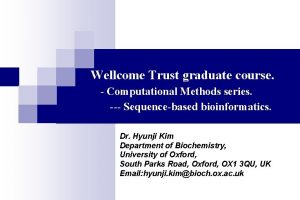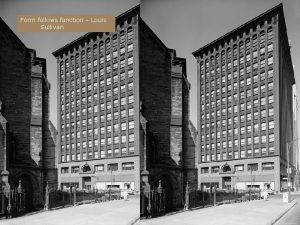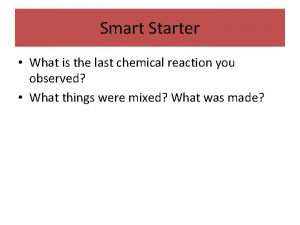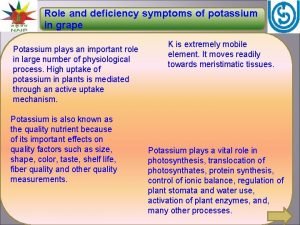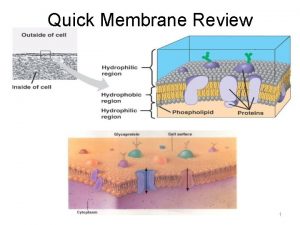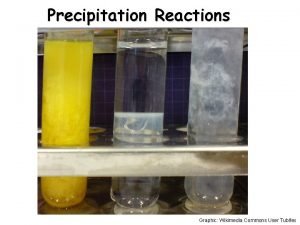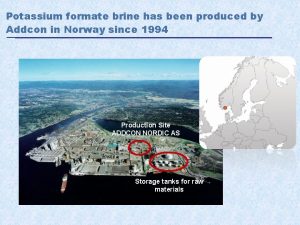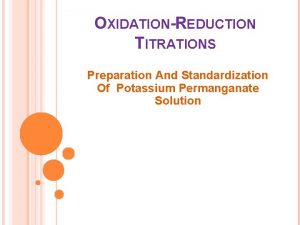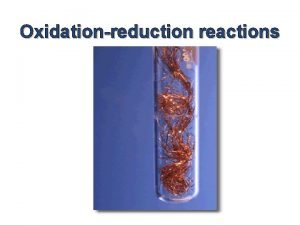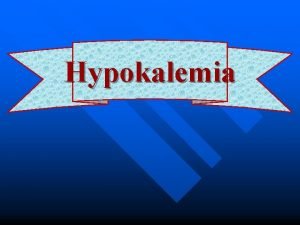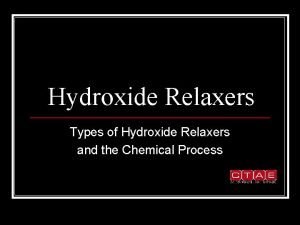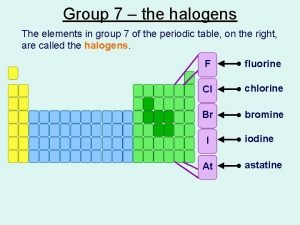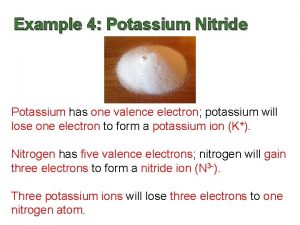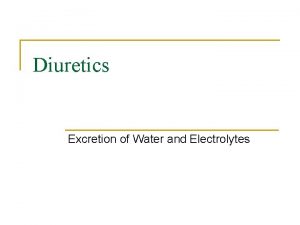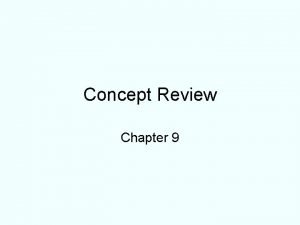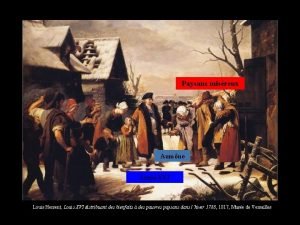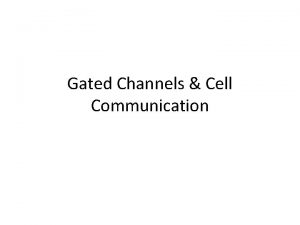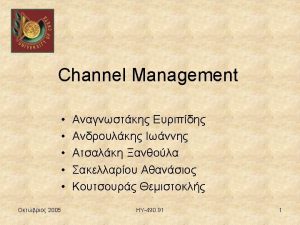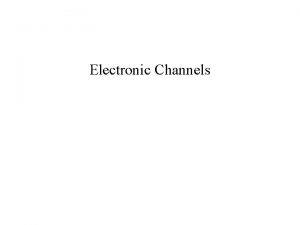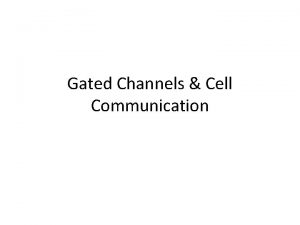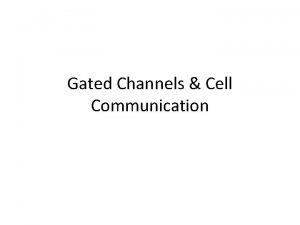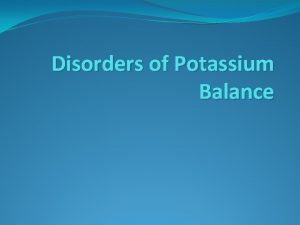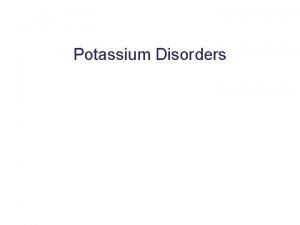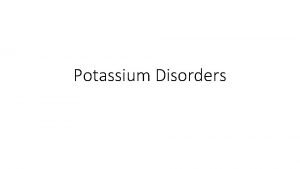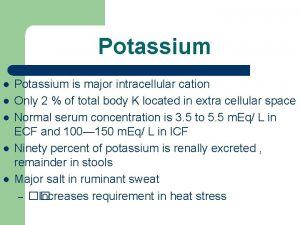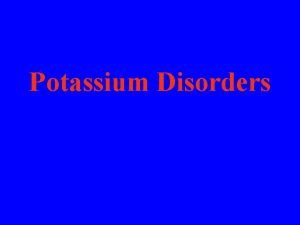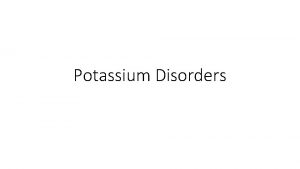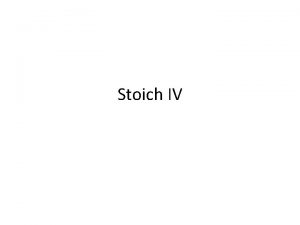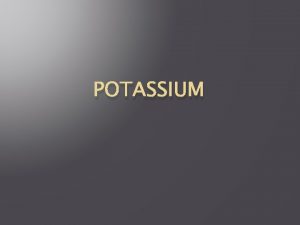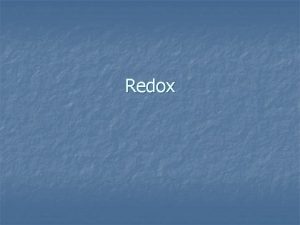Potassium Channels Louis Colling function Potassium channels are


























- Slides: 26

Potassium Channels Louis Colling

function • Potassium channels are channels that span cell membranes and are selective for potassium • Participate in: • Maintain cell volume • Dampen membrane excitability • Programmed cell death


Diseases • Episodic Ataxia • Bartter’s Disease • Neuromytonia • Multiple Sclerosis • Rheumatoid Arthritis • Diabetes Mellitus • Short/long QT Syndrome • Glioblastoma

types • Calcium-activated • Inwardly rectifying • Tandem pore domain • Voltage-gated

Calcium-activated Potassium channels • 6 T 1 P • Three subtypes • BK (large conductance) • IK (intermediate conductance) • SK (small conductance) • Kca 4/Kca 5 • Na+, Cl-, p. H • NOT Ca 2+ • Multiple members of the family activated are both ligand AND voltage activated, and are nonselective for Rb, Cs

Inward-rectifier Potassium channel • 2 T 1 P • Three subtypes • ROMK • GPCR regulated • ATP-sensitive • Voltage-gated, close upon depolarization

Tandem pore domain • 4 T 2 P • “leak channels” • Rectifiers, regulated by • • Oxygen tension p. H Mechanical stretch G proteins • Not two-pore channels • 15 known channels • Contribute to resting potential

Voltage-gated potassium channels • 6 T 1 P • Six general classes • delayed rectifier, A-type, outwardrectifying, inwardly-rectifying, slowly activating, modifier/silencer • Shaker, shab, shaw, shal, uh. . . Kv 5, Kv 6. . . Kv 12. • Beta subunits


Background • Shaker potassium channels are delayed rectifier channels that primarily participate in action potentials • After activation, channels enter a long-lived nonconducting state called the inactivated state • These transitions are governed by physical conformational changes of the channel protein

Inside-out patch clamp

Trypsin experiments

Amino-terminal mutants

Maintenance of function mutants

Inactivation kinetics

Positively charged mutants

Point mutations

. . . more point mutations


Background • Structural studies of membrane proteins are difficult due to the environment needed for proper assembly • The interaction between the voltage-sensing domain and the pore domain are poorly understood • Generalized Interaction-energy Analysis • Uses molecular dynamics simulations to observe structural interactions

Simulated Kv 1. 2 -2. 1 chimera

Q-V curves

Betweenness

Canonical and proposed alternate pathway

 Antigentest åre
Antigentest åre Louis vuitton vl
Louis vuitton vl Potassium channels
Potassium channels Form follows function sullivan
Form follows function sullivan Potassium period
Potassium period 3 sodium out 2 potassium in
3 sodium out 2 potassium in Multi k classic
Multi k classic He3n2
He3n2 Potassium deficiency symptoms
Potassium deficiency symptoms Action potential sodium potassium
Action potential sodium potassium Kcl precipitate
Kcl precipitate Potassium nitrate
Potassium nitrate Formate brines
Formate brines Molecular mass of kmno4
Molecular mass of kmno4 Preparation and standardization of potassium permanganate
Preparation and standardization of potassium permanganate Zinc and copper reaction
Zinc and copper reaction Hypokalemia symptoms
Hypokalemia symptoms Sodium hydroxide relaxers are commonly called:
Sodium hydroxide relaxers are commonly called: Bohr model diagram for carbon
Bohr model diagram for carbon Hallogen group
Hallogen group Is potassium nitride ionic or molecular
Is potassium nitride ionic or molecular Acetazolamise
Acetazolamise Potassium sparing diuretics mechanism of action
Potassium sparing diuretics mechanism of action Potassium sparing diuretics mechanism of action
Potassium sparing diuretics mechanism of action Potassium magnetometer
Potassium magnetometer Potassium before surgery
Potassium before surgery Potassium chloride + silver nitrate
Potassium chloride + silver nitrate


